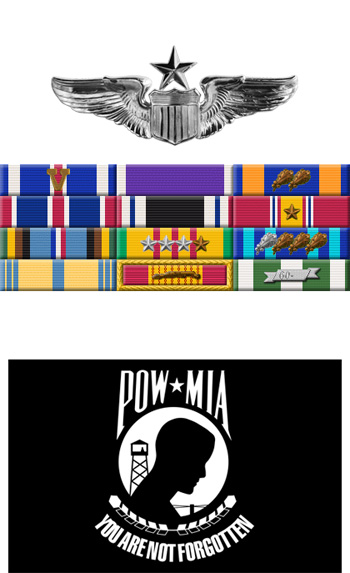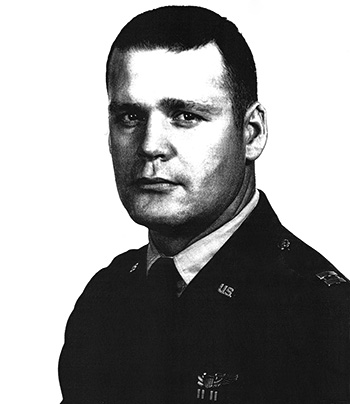
|
Charles E. Shelton |
 |
|||
| Rank, Service | ||||
Colonel O-6, U.S. Air Force |
||||
| Veteran of: | ||||
|
||||
| Tribute: | ||||
Charles Shelton was born on April 29, 1932, in Utica, Kentucky. He was commissioned through the Air Force ROTC program on June 7, 1954, and went on active duty beginning October 12, 1954. Lt Shelton next attended pilot training and was awarded his pilot wings at Bryan AFB, Texas, in December 1955, followed by reconnaissance pilot training at Lowry AFB, Colorado, from January to July 1956. His next assignment was as an RB-66 Destroyer pilot with the 10th Tactical Reconnaissance Squadron at Spangdahlem AB, West Germany, from July 1956 to February 1958, and then with the 30th Tactical Reconnaissance Squadron at Spangdahlem from March 1958 to April 1959. He served on the staff of the 10th Tactical Reconnaissance Wing at Spangdahlem from April to August 1959, followed by RF-101 Voodoo Combat Crew Training from August to November 1959. Capt Shelton next served as an RF-101 pilot with the 29th Tactical Reconnaissance Squadron at Shaw AFB, South Carolina, from November 1959 to February 1962, and then deployed as an RF-101 pilot with the 2nd Air Division at Tan Son Nhut AB, South Vietnam, from February 1962 to January 1963. His next assignment was as an RF-101 pilot back with the 29th Tactical Reconnaissance Squadron at Shaw AFB from January 1963 to June 1964, followed by service as an RF-101 pilot deployed with the 15th Tactical Reconnaissance Squadron at Kadena AB, Okinawa, from June 1964 until he was forced to eject over Laos on April 29, 1965. Capt Shelton was captured and believed to be held in Laos for several years, but when he was not released at the end of the war, his official status was changed to Died While Captured on September 19, 1994, having been promoted through the ranks to Colonel during the time he was missing. |
||||
|
||||

